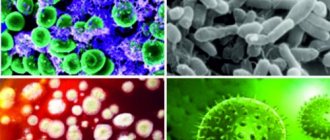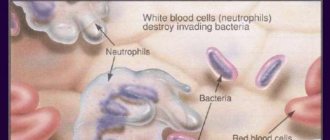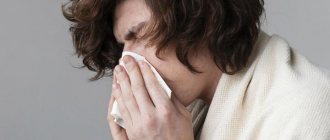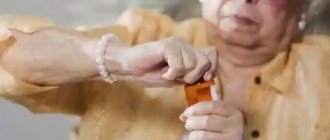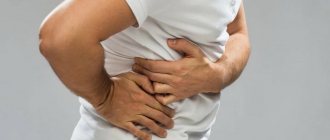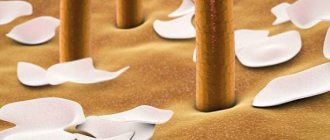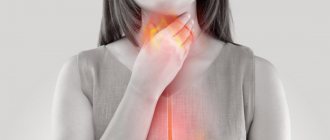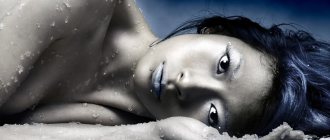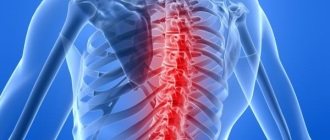Main types of scalp
- Normal, with the sebaceous glands producing only the required amount of sebum to maintain softness and elasticity.
- Dry, with scanty presence of this fat and insufficient supply of nutritional components. The skin dries out and the head itches.
- Flaky dandruff with the appearance of dandruff, scalp burning, discomfort, the patient complains of itching regardless of the type, hormonal imbalance appears.
- Oily, characterized by excess sebum production, tangled and greasy hair.
- The deeper ones produce new cells to replace the dead ones on the surface of the epidermis.
- They exfoliate and are removed from the top layer, gradually renewing the scalp.
- Here are hair follicles, sebaceous and sweat glands, sebum, nerve endings, and cells responsible for immune defense.
- They provide metabolic functions, tactile sensations, and regulate skin temperature.
The structure of the skin includes several layers:
Any failure in these functions can lead to disruption of processes and the appearance of problems when the scalp itches.
Diagnostics
Anamnesis
- Localization : focal or generalized.
- Onset : acute onset is the least characteristic of systemic diseases.
- Duration.
- Nature/character : severe, constant itching, worsening in the evening - scabies;
- “burning” itching – perpetiform dermatitis;
- “tingling” – polycythemia.
Physical examination
- Careful examination of the skin: primary lesions;
- excoriation of the skin in various areas (pediculosis, scabies);
- inflammatory papules on the legs with a small vesicle in the center (flea bites);
- “butterfly” sign in the upper central part of the back (hepatobiliary pathology);
- uremic chills.
Laboratory research
Complete blood count with leukoformula, urea, creatinine, liver tests (markers of cholestasis - alkaline phosphatase, gamma-glutamyl transpeptidase (GGT), determination of bilirubin), thyroxine (T-4) and thyroid-stimulating hormone (TSH), blood glucose.
Scalp problems
The most common complaints include itching, dandruff, dryness and flaking. The causes of these symptoms can be different:
- unfavorable influences of the external environment;
- sun activity;
- chlorinated water;
- blow drying;
- frequent showers;
- incorrectly selected shampoo;
- varnishes, masks and other hair care products;
- low humidity levels;
- allergy;
- hormonal imbalance;
- genetic predisposition.
Also, dryness and itching, flaking of the skin can cause atopic dermatitis and other skin diseases.
Diet
Diet for skin diseases
- Efficacy: therapeutic effect after a month
- Time frame: three months or more
- Cost of products: 1400-1500 rubles per week
Diet for dermatitis
- Efficacy: Therapeutic effect after 3 weeks
- Timing: Constantly
- Cost of products: 1300-1390 rubles per week
Diet for psoriasis
- Efficacy: healing effect
- Timing: constantly
- Cost of products: 980-1150 rubles per week
Diet for facial demodicosis
- Efficacy: therapeutic effect after 30 days
- Timing: during exacerbation/permanently
- Cost of products: 1500-1600 rubles per week
Considering that any dermatological disease has an allergic component, the diet should not contain products with high sensitizing activity, artificial food additives, as well as products containing histamine and promoting its release. These products include: strawberries, cocoa, chocolate, coffee, orange juice, tomatoes, cow's milk, hazelnuts, all cheeses, smoked meats, herring, tuna.
Products with weak allergenic activity: beef, lamb, turnips, zucchini, chicken, pumpkin, squash, apples (green), fermented milk products, green gooseberries, plums, white currants, butter, dried fruits, cucumber, offal, olive oil, pearl barley and rice porridge, green pears.
To extract nitrates from vegetables, they need to be kept cold (especially potatoes to reduce the starch content), cereals must be soaked and boiled in a third of water (drain the water twice after boiling), and when preparing broths, also drain the water several times.
In the diet for atopic, seborrheic dermatitis and demodicosis, easily digestible carbohydrates are limited: sweet pastries, confectionery, jam, sweets, honey, jam, sugar, condensed milk. Excludes sausages, red meat, smoked meats, seafood, marinades and sauces, pickled vegetables, rich broths, mushrooms in any form, spicy dishes, sauces and seasonings (horseradish, vinegar, mustard, mayonnaise, ketchup), canned fish and meat, fatty sour cream. and animal fats, sugary drinks and alcohol. Salt is subject to restrictions. A strict diet must be followed during the period of exacerbation (3-4 weeks).
Types of skin itching
The condition when the back of the head or the entire skin itches is a protective reaction to remove the irritating factor. There are different types of itching:
- Dermatological, characteristic of atopic dermatitis, scabies, lice, psoriasis.
- Neurological, arising from lesions of the nervous system.
- Systemic, observed in various pathologies of internal organs.
- Psychogenic, appearing under stress and psycho-emotional tension.
- Multifactorial, in the case of simultaneously different causes of origin.
- Idiopathic, with an unclear etiology.
- Other.
Application experience
Under our supervision there were 75 patients aged from 18 to 76 years (34 men and 41 women) with diagnoses of “atopic dermatitis”, “allergic dermatitis”, “chronic eczema in the acute stage”, “lichen planus”, “toxidermia” ( Fig. 2).
Rice. 2. Distribution of patients by nosology
All patients received topical and systemic therapy, including the antihistamine Cetrin (cetirizine) at a dose of 10 mg once a day at night. The duration of therapy is from 14 to 21 days, depending on the diagnosis. Patients assessed the effectiveness of itching relief using a point system: 0 points - no itching, 1 point - mild itching (present, but not bothersome), 2 points - moderate (bothering, but does not interfere with daily activity and/or sleep), 3 points - severe /intense itching (disturbs and interferes with daily activity and/or sleep).
The maximum reduction in itching intensity was observed within 3 hours of taking the drug in the first five days (Fig. 3).
Rice. 3. Average subjective assessment of the intensity of itching after using the drug
Subsequently, a decrease in itching or its absence was noted by the 10th day of therapy, with a simultaneous decrease in the clinical manifestations of the disease (Fig. 4).
Rice. 4. Dynamics of clinical manifestations
The results obtained demonstrate the high effectiveness of Cetrin (cetirizine) in the treatment of chronic and acute dermatoses. Cetrin (cetirizine) has a pronounced antipruritic effect, and also reduces other clinical manifestations of allergic dermatoses (infiltration, erythema). In addition, the drug can also be used for somatic diseases as symptomatic therapy.
Bibliography:
- Duncan WC, Fenske NA Cutaneous signs of internal disease in the elderly // Geriatrics. 1990. Vol. 45. No. 8. P. 24-30.
- Masmoudi A., Hajjaji Darouiche M., Ben Salah H. et al. Cutaneous abnormalities in patients with end stage renal failure on chronic hemodialysis. A study of 458 patients // J. Dermatol. Case Rep. 2014. Vol. 8. No. 4. P. 86-94.
- Abel EA, Farber EM Malignant cutaneous tumors // Scientific American Medicine / eds. E. Rubenstein, D. D. Federman. Section XII. New York: Scientific American, Inc., 1992. P. 1-20.
- Dangel RB Pruritus and cancer // Oncol. Nurs. Forum. 1986. Vol. 13. No. 1. P. 17-21.
- Bernhard JD Clinical aspects of pruritus // Dermatology in General Medicine / eds. T.B. Fitzpatrick, A.Z. Eisen, K. Wolff et al. 3rd ed. Chapter 7. New York: McGraw-Hill, 1987. P. 78-90.
- Smirnova G.I. Antihistamines in the treatment of allergic diseases in children. M., 2004.
- Gushchin I.S. Cetirizine is a standard H1-antihistamine // Mistetstvo Likuvannya. 2009. No. 5. P. 60-70.
- Belsito D. Second-generation antihistamines for the treatment of chronic idiopathic urticaria // J. Drugs Dermatol. 2010. Vol. 9. No. 5. P. 503-512.
- Grant J., Riethuisen J., Moulaert B., DeVos C. A double-blind, randomized, single-dose, crossover comparison of levocetirizine with ebastine, fexofenadine, loratadine, mizolastine, and placebo: suppression of histamine-induced wheal-and -flare response during 24 hours in healthy male subjects // Ann. Allergy Asthma Immunol. 2002. Vol. 88. No. 2. P. 190-197.
- Kavosh E., Khan D. Second-generation H1-antihistamines in chronic urticaria: an evidence-based review // Am. J. Clin. Dermatol. 2011. Vol. 12. No. 6. P. 361-376.
- Volosovets A.P., Krivopustov S.P., Pavlik E.V. The role of allergic inflammation in everyday medical practice. Optimization of antiallergic therapy // Medical literature (Kyiv). 2010. No. 1. P. 70-75.
- Nekrasova E.E., Ponomareva A.V., Fedoskova T.G. Rational pharmacotherapy of chronic urticaria // Russian Allergological Journal. 2013. No. 6. P. 69-74.
What to do if you're dry
Choose milder herbal shampoos enriched with plant oils and extracts. They will help restore lost balance and remove increased sensitivity, redness and irritation.
Use argan and olive oil, which contains unsaturated fatty acids and vitamin E (tocopherol), which transform hair into elastic, elastic and silky. They contain linoleic, oleic, palmitic, stearic, vanillic acid, as well as fungicides, tyrosol, and sterols. This composition moisturizes the scalp and strengthens brittle hair.
Take a not too hot shower, wash with slightly warm water. Higher temperatures help remove fat, causing irritation.
Care Tips
- Prevention of scratching: short-filed nails, lightly rubbing itchy areas.
- After washing, dry your skin carefully using wet movements, use a soft towel or a hair dryer on a cold setting.
- Avoid long hot baths. Try a bath with sodium bicarbonate (baking soda) or medicated oils.
- Use loose clothing and loose bedding/blankets.
- Avoid overheating and sweating, especially during night sleep.
- Increase the humidity in the bedroom so that your skin loses less moisture.
- Wear cotton gloves at night to prevent scratching.
- Avoid damaging the skin with alcohol-containing rubbing, woolen clothing, and excessive hygiene procedures.
- Cleanse your skin gently using moisturizers.
- Use cooling, soft compresses.
- You can use an anesthetic mixture: aftershave cream with menthol 50 ml, Diphenhydramine 1% 3–5 ml, Lidocaine 2% 1–2 ml, Novocaine 0.5% 5–10 ml. Mix and serve chilled.
- Use relaxation and positive visualization techniques.
Pathologies that cause acute itching of the scalp
- Dandruff can be large in oily skin and small in dry skin. It appears as a result of stress, poor nutrition, hormonal imbalance, and the influence of a warm and humid climate.
- Seborrheic eczema is characterized by not only itching, but also rashes, redness and inflammation of the skin, often leading to the appearance of blisters. The rash can also affect the neck and face.
- Fungal infections are difficult to treat and cause itching, redness, blisters, and peeling. Over time, fungal spores penetrate deeper layers and cause severe infection and intoxication. They easily infect other people and are transmitted through contact and household contact.
- Seborrheic dermatitis is characterized by inflammation and affects areas rich in sebaceous glands. It is caused by fungi of the genus Malassezia, the same as dandruff, and is characterized by flaking and varying degrees of damage to the skin and hair.
- Infestation with lice, fleas, ticks and other parasites turns hair into a breeding ground for disease. They become covered with nits, which are difficult to comb out even with a special comb. In this case, total treatment with anti-pediculosis drugs, which are sold in pharmacies in the form of sprays and solutions, is required.
- Allergic reactions can occur even to hair care and styling products that have been used for more than one year. The cause of the allergy can be found out with a test from a dermatologist.
- Chemical and mechanical irritation with acute itching is also caused by hair dye, wearing tight headwear, and the use of care products with aggressive components included in the composition.
- Psoriasis manifests itself as small flaking of the scalp, redness, formation of plaques and thick scabs. It forms both single spots and affects large damaged areas. The patient feels tightness of the skin, itching, and it begins to peel off severely.
Itching of the scalp Constant burning of the scalp, tingling, desire to scratch - painful itching. Why does it arise? The reasons may be the following: an allergic reaction or the development of a dermatological or trichological disease.
Pathophysiology
Signals for pain and itching caused by skin causes are transmitted along the same pathways, but the afferent C-fibers differ functionally: one part of the nerve fibers is stimulated by histamine, the other by other substances that cause itching (for example, serotonin). There is evidence of similarities between neuropathic pain, itch and cough. Their common property is peripheral and central sensitization of the afferent nervous system. This explains the effectiveness of antiepileptic drugs and antidepressants for such a variety of conditions, as well as the ineffectiveness or low effectiveness of H1 blockers for some types of itch.
Mechanisms and mediators involved in the formation of the sensation of itching:
- amines (histamine, serotonin, acetylcholine);
- proteases and kinins (tryptase, chymase, kallikrein, bradykini, etc.);
- neuropeptides (substance P, neurotensin, etc.);
- cytokines (prostaglandin E reduces the threshold for susceptibility to itching);
- opioid receptors (metenkephalin, leuenkephalin, β-endorphin), naloxone reduces itching, opiates relieve pain but increase itching.
Consequences and complications
Itching in dermatological diseases has unpleasant local and general consequences:
- When scratching, excoriations (scratches, abrasions) and increased pigmentation of these areas occur.
- Wounds in the epidermis are “gateways” for infection, which is further complicated by pyoderma and inflammation of the hair follicles ( folliculitis ).
- Traumatization of the follicles when combing, which leads to hair loss.
- At the site of permanent injury, lichenification (sharp thickening) of the skin and fibrosis develop - this is dangerous because scars form at the site of the follicles, they die, and along with them hair falls out.
- Changes in emotional state: attention and performance are impaired, irritability appears, self-esteem and self-confidence decrease.
- Sleep is disturbed.
Prevention
Prevention of dry skin, itching and skin diseases includes:
- Choosing the right shampoo according to your hair type, especially for sensitive skin.
- Exclusion of alkaline shampoos (pay attention to the pH of the shampoo).
- Infrequent hair washing, since frequent washing reduces the protective properties of the skin and the lipid layer.
- Using shampoos with natural ingredients, allantoin, zinc, ceramides, tar, herbal extracts and panthenol.
- Avoid blow-drying using gels, mousses, varnishes and foams.
- Fighting stress (meditation, yoga, special gymnastics, leisurely walks, moderate sports).
- Strengthening general health, taking care of liver and intestinal health.
- A nutritious and healthy diet, excluding the contraindicated foods mentioned above.
- Rejection of bad habits.
